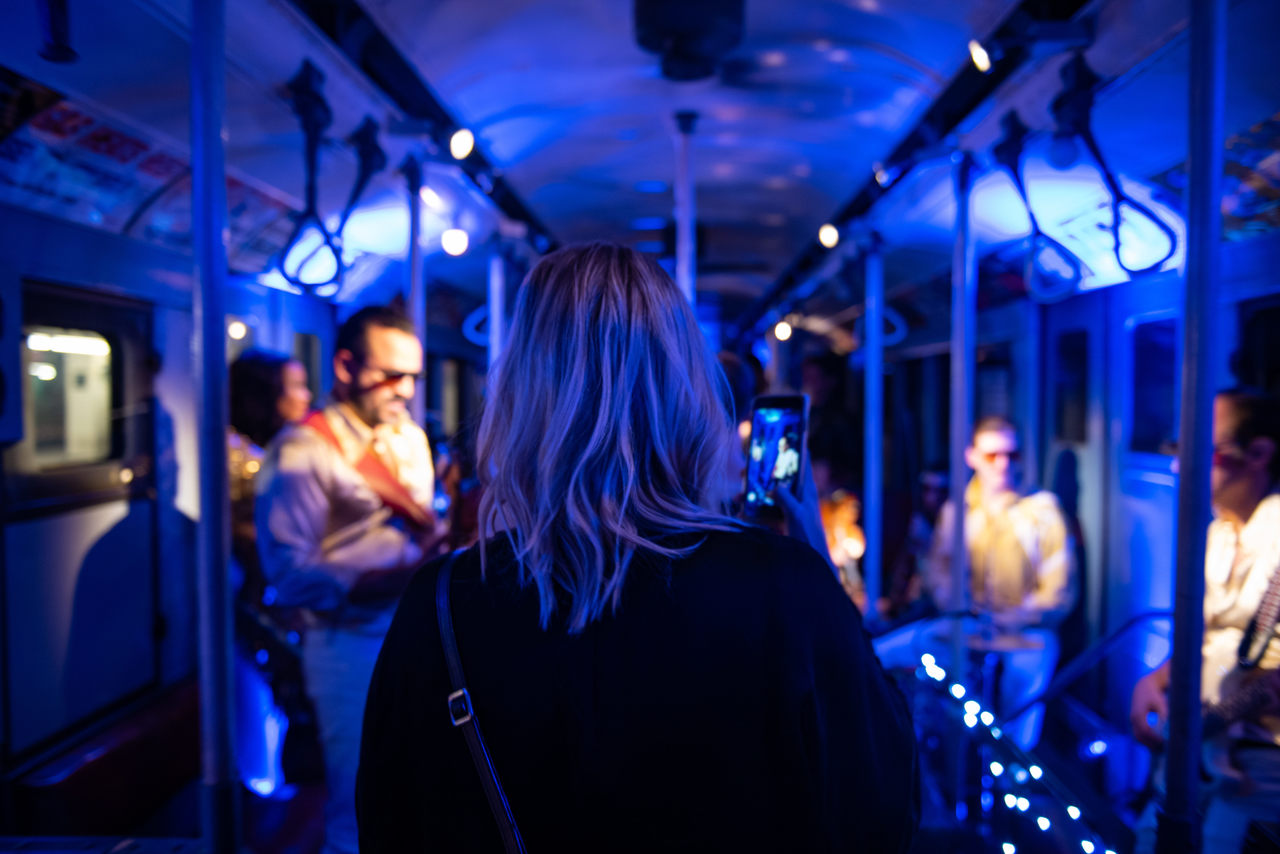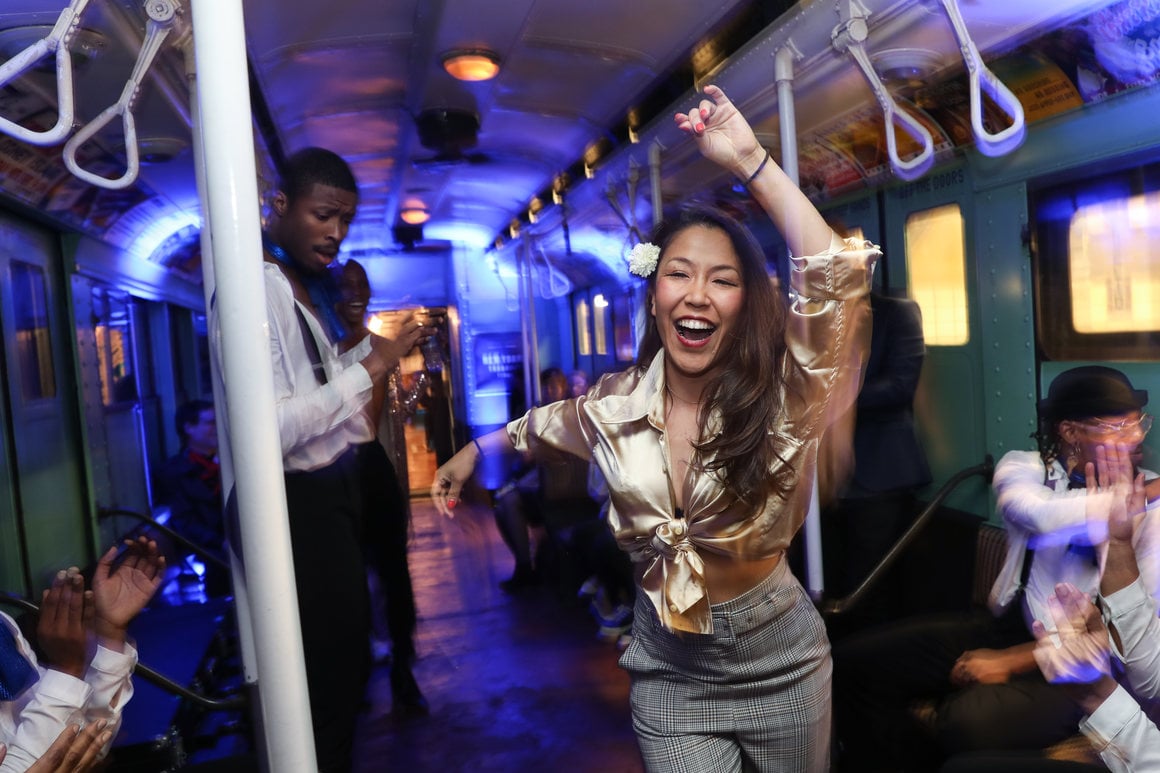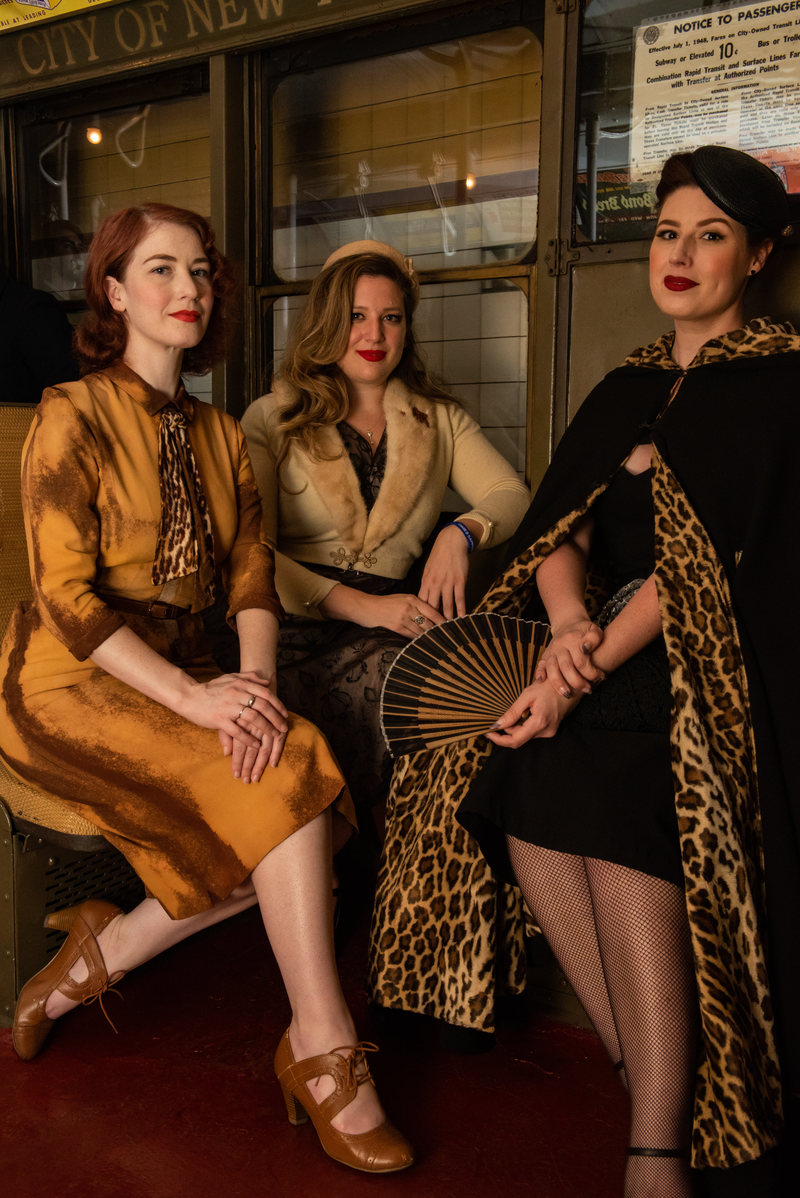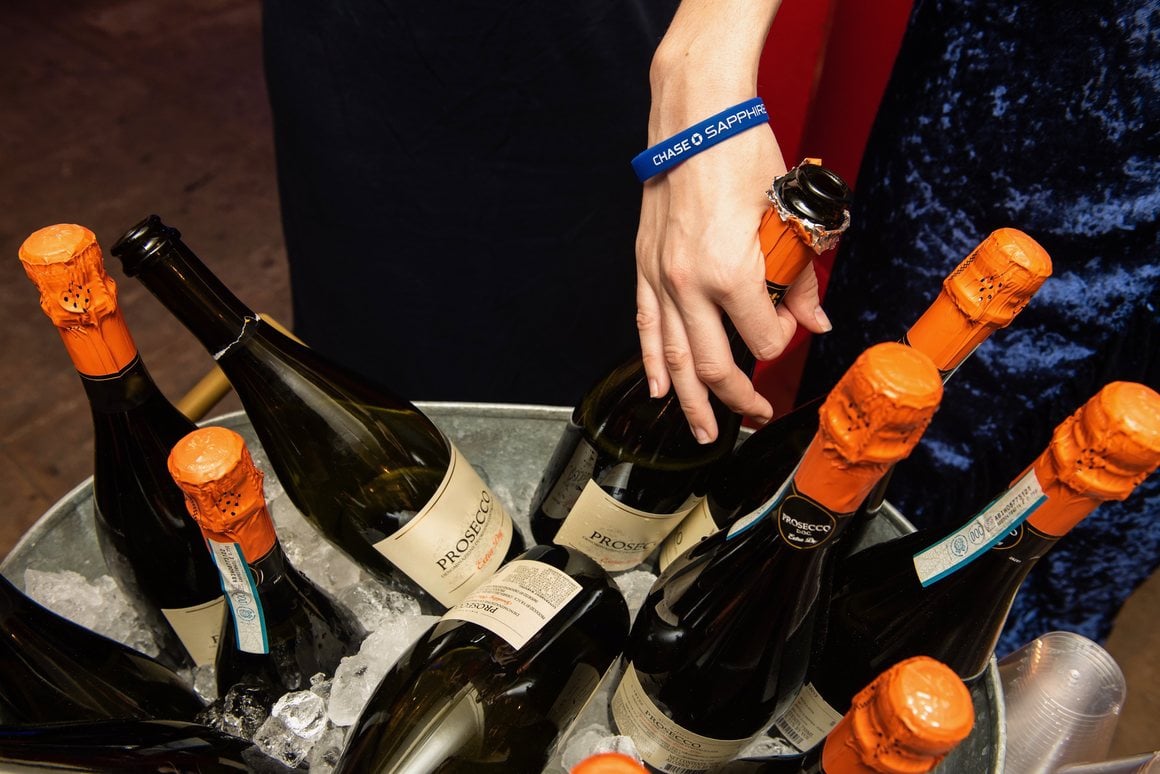
Atlas Obscura Rides the Rails to New York’s Forgotten Past
Commuting via public transit is an activity that many probably view as unremarkable. But one October evening in 2018, a group of privileged New Yorkers took a very memorable subway ride — back through time.
Beginning their journey with an after-hours visit to the New York Transit Museum, a select group of Chase Sapphire cardmembers were treated to a ride aboard a restored MTA train from the 1920s, complete with wicker seats and vintage signage. Each of the train’s cars was themed, providing music and entertainment from an iconic 20th century decade for its riders, as well as an enviable spectacle for onlookers on every subway platform they passed.
This unforgettable experience was the result of “New York Through Time,” a partnership between Chase Sapphire®, J.P. Morgan Chase’s credit card provider, and Atlas Obscura, an online publication focused on cataloguing unusual or obscure travel destinations.
“Atlas Obscura is the definitive guide to the world’s hidden wonders, so we are a community-driven publication,” says Jordan Schultz, Director of Marketing and Audience at Atlas Obscura.
I think the thing [Atlas Obscura does best] is we connect people to place. We give them a playbook that arms them with the information they need to really understand the destinations they’re traveling to.
Leveraging its global community of savvy explorers was a natural next step as the publication’s database grew over the past decade. “We have this incredible events business,” says Schultz. “We host 400-500 local events throughout the U.S. and a couple across the globe as well. And they all are driven by this database of 16,000 places and foods that our community has found in the last 10 years.”
We sat down with Schultz to talk about this partnership and how Atlas Obscura’s knowledge of the obscure, coupled with their ability to put on incredible events, enabled the program to pioneer a completely new type of sponsored content.

A guest joins in the fun.
JAMES SPRANKLE/ATLAS OBSCURA
Pressboard: Tell us more about the Chase Sapphire program that you ran.
Jordan Schultz: Chase Sapphire was looking to deliver one-of-a-kind unique experience to their audience and Atlas Obscura is uniquely positioned to deliver on that — to create merriment and wonder through its events. And so, when Chase comes to us and says we need to delight and surprise our members, we’ve got a script ready for them.
Can you talk about what it took operationally to make this program happen? Were there any things that you didn’t expect?
The New York Transit Museum has a set of vintage rail cars that are still functioning. For the event, we had cars that spanned themes from the 1920s to present, but the subway’s really loud. We thought we could do something like spoken word, we could do poetry, but then as we took these rail cars through the subway, we started listening and we realized: “Damn, the subway’s really loud.” And so, we had acts that were not only visual, but really loud themselves so they could compete with that track noise and the bumps and the shakes of the MTA. And so that’s how we landed on musical performances and dancers.

Guests went all out with vintage costumes, hair and makeup.
JAMES SPRANKLE/ATLAS OBSCURA
How did you bring that experience to life, both during the event and through content for people who couldn’t be there to see it?
The guests were phenomenal. Every guest was dressed to the nines and according to different styles or different eras of fashion in New York City. There was a flapper, there were folks in glitter and sequins. There were folks in zoot suits. Every era of New York fashion was totally represented, and it was really cool to see that. I mean, if [the guests] hadn’t come capable of swing dancing alongside the performers in the 1920s car or super interested in the folk performers in the 1980s car, the event wouldn’t have been as spectacular as it was.
More and more folks are traveling for a photo as opposed to an experience, which is something so utterly against the tenets of Atlas Obscura.
[During the event,] we were riding this car through the actual MTA subway, so people saw us. There were Google searches after the event like: “What’s this weird vintage train running through the subway?” It was just very visually stimulating and odd. Then there’s the storytelling afterwards […] We brought expert filmmakers and hired photographers and together we created integrated assets that really told the story from the conception of the idea all the way to the finished product.
How do you attract an audience to your branded content?
One of the things that I work on with our branded team is that we should always benchmark our branded content against our editorial content. And we’re pretty successful at doing that. We have some really solid branded partners who are interested in good storytelling as well, Chase being one of them. You have to start with a really good idea, you have to bring the quality and then the distribution will work itself out. Of course, there are tricks and things you have to do to get there. Especially with algorithms and that sort of thing. But if you start with that core piece of content and it’s really good, the rest is a cinch.

Atlas Obscura staff served prosecco at check-in.
JAMES SPRANKLE/ATLAS OBSCURA
How would you define Atlas Obscura’s mission?
I think the thing we do best is we connect people to place. We give them a playbook that arms them with the information they need to really understand the destinations they’re traveling to, whether that is a quick road trip, a quick walk or a flight across the world.
More and more folks are traveling for a photo as opposed to an experience, which is something so utterly against the tenets of Atlas Obscura. And I love our audience for [being] so discerning about not only telling us stories, but then also challenging us to dig deeper into our stories and come to an understanding about place, time and food, and how people interpret these things.
Every guest was dressed to the nines and according to different styles or different eras of fashion in New York City. There was a flapper, there were folks in glitter and sequins. There were folks in zoot suits.
Publishers that will survive this changing landscape, especially when it comes to revenue and traffic, are going to be the ones that find their own path and find the things that resonate with their audiences the best. For Atlas Obscura, that’s trips, things like the Chase Sapphire event and really delivering on this promise that we can help you experience something that you’ve seen every single day in a different way.
What’s your current, favorite hidden travel gem?
Every home in the old town of Cartagena, Colombia, has these door knockers and they’re just so whimsical and wonderful and just beautiful, and all the colors are these bright hues of orange and pink and blue. There was a Spanish tradition during the colonial period when affluent families installed these really grandiose door knockers to signal the type of work that they did. A sailor might have put up a door knocker in the shape of a fish, a farmer maybe in the shape of some sort of cattle — they all come with their own individual history. My partner and I spent the whole day sort of mapping these out and taking guesses at what the families of yore might’ve done who built these homes.
We have a book club here at Pressboard, so we’d like to ask: what’s your favourite book of all time?
This is the most Atlas Obscura answer you’ll ever receive: I’m a big fan of Don Quixote. I think Don Quixote is a little bit inside of all of us. We’re all explorers in some way and we all travel the world or travel our own backyards and have to come to terms with our own realities and how they relate to other people.
Get your Content Marketing Fix
Sign up to receive tips on storytelling and much more.
We promise to respect your inbox.

